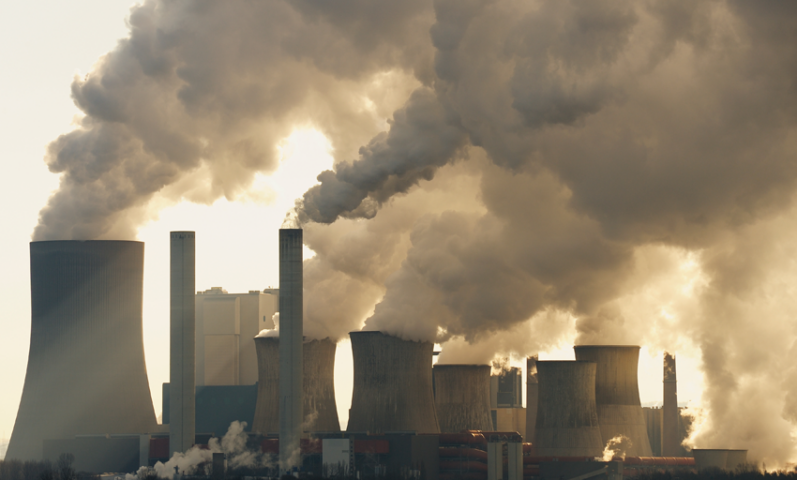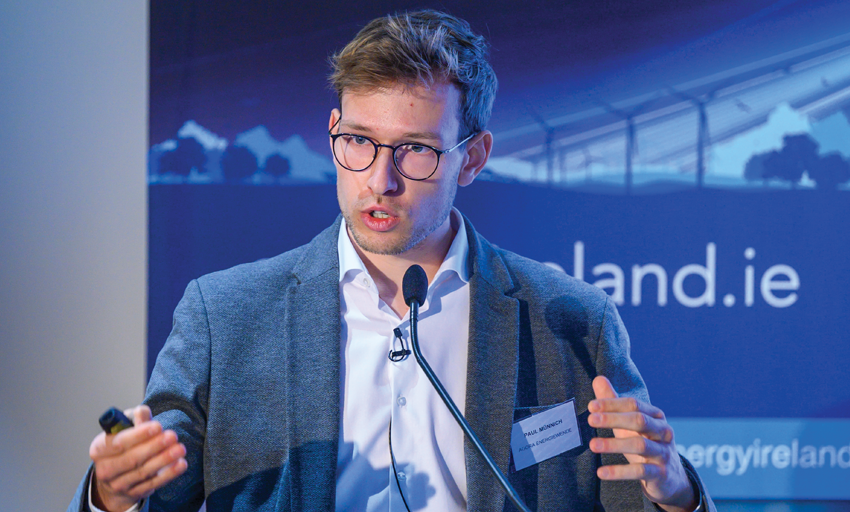
Progress in offshore wind infrastructure development
30th May 2023
Minister Eamon Ryan TD: Green hydrogen, decarbonised gases, and the energy transition
30th August 2023Emissions reductions for industry: Lessons from Germany

Paul Münnich, Project Manager for Agora Industry, outlines the scale of the challenge in decarbonising the industrial sector in Germany.
Münnich contextualises that the German energy sector is currently in a state of relative flux, with the use of coal-powered energy having seen a short-term uptick in the aftermath of the Russian invasion of Ukraine and reducing the German supply of natural gas. Prior to the invasion, Germany had a significant reliance on the use of natural gas imported from the Russian Federation, amidst the German phase out of nuclear power.
Therefore, Germany has had to adapt to an energy market with a much-reduced supply of natural gas and has utilised carbon-heavy sources as a medium-term solution. With the increased use of coal, Germany, in spite of having one of the highest rates of renewable energy sources in Europe, has a higher carbon intensity than European countries such as the UK, France, and Spain.
Münnich and his organisation, Agora Industry, have carried out the Power-2-heat study, which examines how best to maximise efficiency in German industrial heating systems.
Killing two birds with one stone
Münnich explains that “after the energy sector, industry is the second largest emitter of greenhouse gas emissions”.
“In Europe, industry accounts for 24 per cent of all greenhouse gas emissions. Of this 24 per cent, roughly two-thirds can be attributed to the supply of power and heat, but the boundary conditions for the industrial transition are already set by the very ambitious ETS framework that the EU set in place.

“To quickly reduce emissions and dependence on natural gas in this decade, electrification is a key lever.”
Paul Münnich
“With the latest reform of the EU ETS, industry needs to be climate neutral by 2040. That gives us 16 years for the transformation, which is really not a lot for the big task we have ahead of us.”
Münnich adds: “In Germany, process heat accounts for 22 per cent of final energy demand and one-fifth of that process heat demand is still being met with coal, whilst the majority (41 per cent) comes from natural gas.
“The supply of power and heat in industry, accounted for 24 per cent of natural gas consumption in Germany, which is a lot, and much of the natural gas we used to use for industry in Germany came from Russia. Therefore, with the study we tried to find a good balance and an opportunity to kill two birds with one stone: reduce emissions and also reduce natural gas consumption.”
Three levers
“The biggest lever for reaching climate neutrality,” Münnich states, “is the deployment of renewables”. “Of course, we still have to get faster, however, we have already achieved quite a lot, for example, in 2022, 83 per cent of all new power generators globally were renewable which, I would say, is quite impressive.
“The second and third levers touch upon the issue of heat; we have to switch from fossil to renewable heat sources and increase energy efficiency. In residential heating, we already see quite a lot of improvement. For example, in Europe sales of heat pumps have increased by roughly 100 per cent since 2019.
“I think this is the right way to go and the upward trend is continuing. The industrial heat transition has not reached that speed; it needs more momentum and it needs more political priority if we want to reach our targets.”
Hydrogen and heat pumps
“In the end, we will have to use a lot of renewable electricity for climate-neutral heat in industry. Often, hydrogen is at the centre of the debate, despite its high energy intensity and cost,” Münnich states. “Hydrogen is very versatile energy carrier and can be used in many different applications like producing steel and chemicals, however, producing renewable hydrogen is very energy intensive. Providing one kWh of heat using renewable hydrogen requires over 1.5 kWh of renewable electricity to produce the hydrogen. So, wherever we can find a better solution which requires less electricity, we should try to opt for that.”
As more efficient alternatives to the use of hydrogen, Münnich notes “electric boilers and large-scale industrial heat pumps are some of the many technology solutions for electrifying heat”. “Our analysis shows that hydrogen uses a lot of electricity whilst heat pumps can provide the same amount of energy with just a fraction of the electricity and the use of low temperature industrial waste heat or environmental heat, so this should really be the focus.”
However, Münnich also believes that “we will need more flexible demand”. “The electrification of industrial heat means that we cannot meet our heat demand in a base load pattern, but we should use renewable electricity when there is a lot of renewable electricity in the grid. When there is little power production by solar and wind we should try to reduce our load as much as possible, for instance by using heat storage technologies.”
Action to be taken
Münnich concludes that there is a need to phase out all fossil fuel usage for heat below 500oC before 2035 to help achieve climate goals.
“We have strategies for hydrogen and the circular economy but not yet for electrification. To quickly reduce emissions and dependence on natural gas in this decade, electrification is a key lever. That is why we also need an electrification strategy.”
